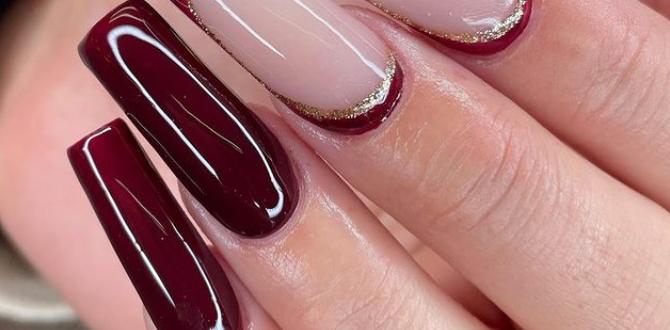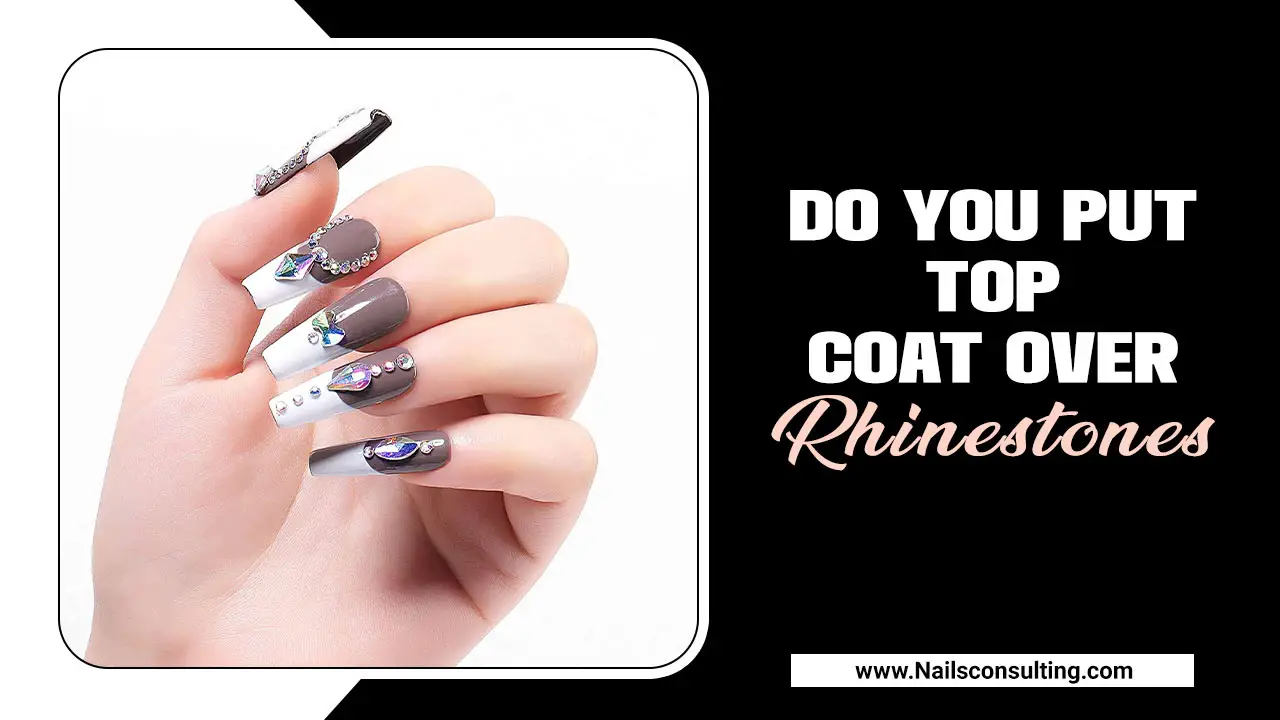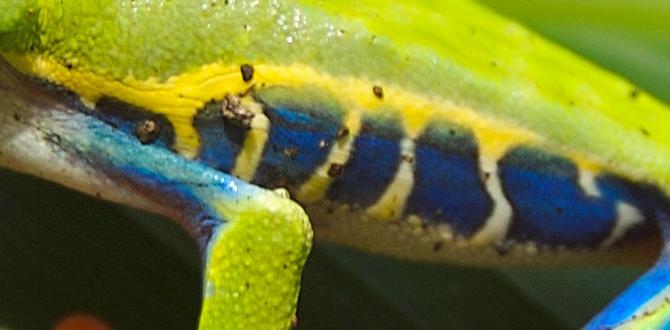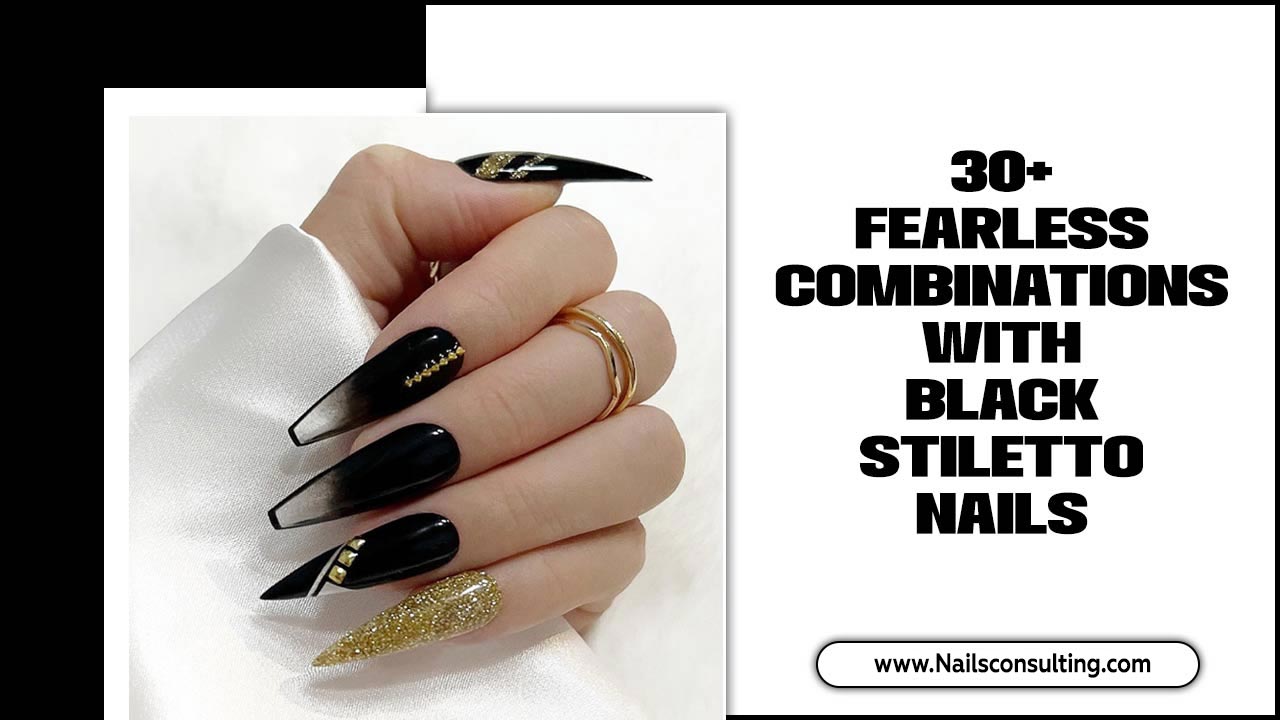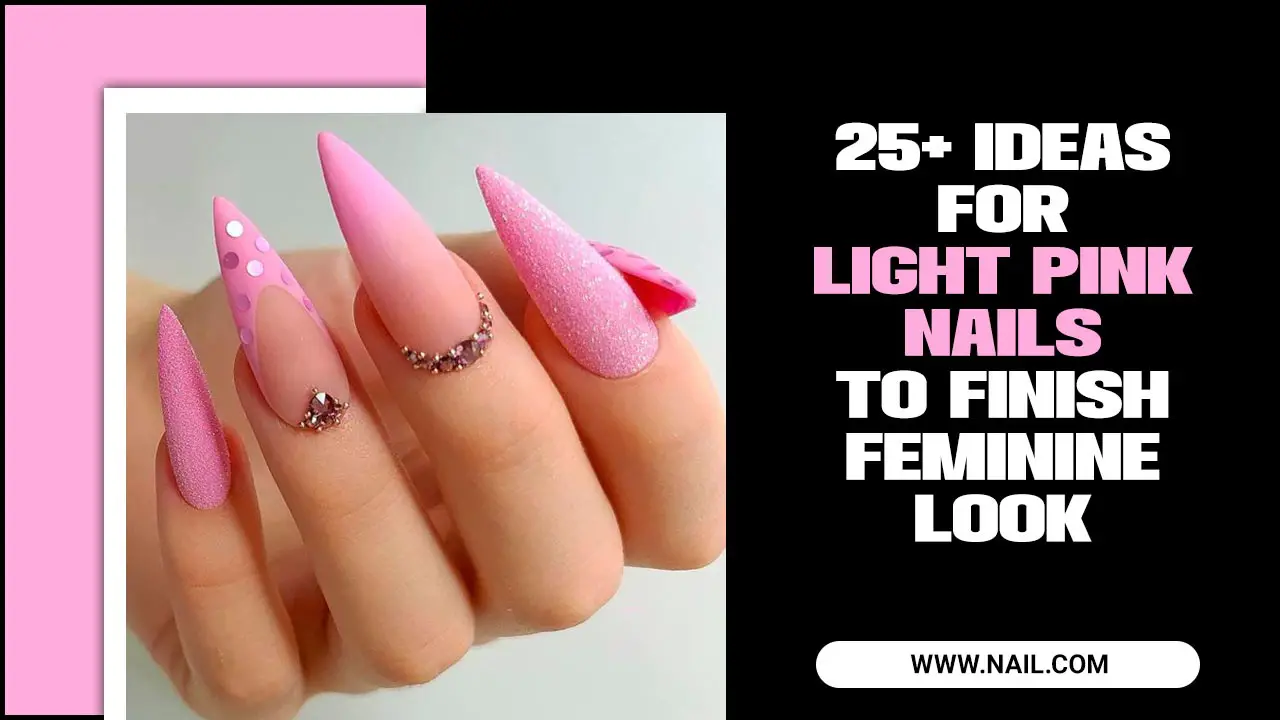Create stunning ocean wave nails with this easy tutorial! Perfect for beginners, you’ll learn simple techniques to achieve beautiful, beachy manicures that add a touch of seaside serenity to your look. Get ready to dive into effortless, gorgeous nail art!
Dreaming of a beach getaway but stuck at home? Let’s bring the ocean to your fingertips! Ocean wave nail art is a super popular trend that looks complex, but I promise, it’s totally achievable, even if you’re new to nail art. We’re talking beautiful blue hues, foamy white crests, and that mesmerizing, calming effect of the sea. This guide will walk you through everything you need to know, from gathering your supplies to mastering the techniques, so you can create stunning wave nails that will have everyone asking where you got your manicure.
Ready to make some waves on your nails? Let’s get started!
Your Essential Ocean Wave Nail Art Toolkit
Before we dive into the fun part – the actual painting – let’s make sure you have all your tools ready. Think of these as your artist’s palette for the perfect beachy manicure. Having the right supplies makes the process so much smoother and the results
so much prettier!
Base and Top Coat: The Foundation of Fabulous Nails
These may seem basic, but they are non-negotiable for a long-lasting and professional-looking manicure. A good base coat protects your natural nails from staining and helps your polish adhere better. A top coat adds shine, seals your design, and prevents chips. Always let them dry completely between coats!
Nail Polish Colors: Your Ocean Palette
This is where the magic happens! For a classic ocean wave look, you’ll want:
- A Deep Blue: Think of the ocean depths. Navy or a rich sapphire works beautifully.
- A Medium Blue: This captures the mid-tone ocean water. Teal or a vibrant cerulean are great choices.
- A Light Blue or Aqua: For the brighter, sunlit shallow waters.
- White: Absolutely essential for creating those foamy wave crests and highlights!
- Optional: Sandy Beige or Nude: If you want to add a touch of the shoreline.
Tools for Precision and Detail
These will help you create those beautiful wave effects and clean up any mistakes.
- Fine-Tipped Nail Art Brushes: You’ll want at least one with a very thin tip for drawing the wave lines and one a bit thicker for blending. If you don’t have specific nail art brushes, a clean eyeliner brush can work in a pinch.
- Dotting Tools: These are fantastic for adding small dots of color or creating subtle highlights.
- Toothpick or Orange Stick: Handy for picking up small amounts of polish, cleaning up cuticles, or even gently blending colors.
- Small Dish or Palette: To place small amounts of polish for easy access with your brushes.
- Nail Polish Remover: For correcting any stray marks or for cleaning up the edges of your nails.
- Cotton Swabs or Lint-Free Wipes: To apply the nail polish remover for clean-up.
Step-by-Step Ocean Wave Nail Art Tutorial for Beginners
Alright, nail artists, let’s get painting! This tutorial focuses on a simple, yet stunning, design that’s perfect for anyone just starting out. We’ll break it down into easy-to-follow steps.
Step 1: Prep Your Nails Like a Pro
A great manicure starts with great prep. This ensures your design lasts and looks its best!
- Clean Up: Remove any old nail polish. Wash your hands thoroughly.
- Shape Them Up: File your nails into your desired shape. A squoval or almond shape often looks lovely with this design.
- Cuticle Care: Gently push back your cuticles with an orange stick. Avoid cutting them unless absolutely necessary, as this can lead to damage. Healthy cuticles frame your nails beautifully.
- Buff (Optional): Lightly buff the surface of your nails to smooth out any ridges. This also helps polish adhere better.
- Apply Base Coat: This is crucial! Apply one thin layer of your clear base coat. Let it dry completely. This protects your nails and makes your colors pop.
Step 2: Create the Ocean Gradient
We’re going to build the ocean’s depth and color using a simple gradient technique. This really sets the stage for our waves.
- Start with the Deepest Blue: Apply one thin coat of your deepest blue polish to about 2/3 of your nail, starting from the cuticle.
- Add the Medium Blue: Next, apply the medium blue polish to the tip of your nail.
- Blend the Colors: While the polish is still wet, gently blend the edge where the two blues meet. You can do this with your polish brush by dabbing and feathering the colors together, or use a clean nail art brush or toothpick to swirl them lightly. The goal is a seamless transition, not a harsh line.
- Add the Lightest Blue (Optional): If you’re going for more of a tropical vibe, you can add a touch of the lightest blue or aqua at the very tip, blending it into the medium blue.
- Pat, Don’t Swipe: For minimal streaking, try a “patting” motion when blending rather than swiping. Think about gently pressing the colors into each other.
- Let it Dry: Allow this gradient base to dry completely. You might need a second coat of each color for opacity, letting it dry between coats.
Pro Tip: If blending feels tricky, you can use a makeup sponge! Dab a little polish onto the sponge and gently pounce it onto the nail, layering the colors from cuticle to tip. This can create a super smooth gradient effect.
Step 3: Paint the Waves
Now for the star of the show – the gorgeous, frothy waves! This is where your fine-tipped brush comes in.
- Dip Your Brush: Load your fine-tipped nail art brush with your white polish. Wipe off any excess on a paper towel. You want enough polish to create a line, but not so much that it’s gloopy.
- Start at the “Shore”: On the part of your nail that is your deepest blue (near the middle or cuticle area), start drawing a curved line. This will be the base of your first wave. Think of a gentle hump or a soft ‘S’ shape.
- Add the Crests: Now, using the same white polish, carefully draw thinner, wavier lines along the edge of the medium blue or the lighter blue section of your nail. These represent the foamy crests breaking. Vary the thickness and shape of these lines to make them look more natural.
- Create Depth: Don’t be afraid to layer! You can add a second, thinner white line just below the first crest to give it more dimension, or add a tiny bit of a darker blue where the wave curves under itself.
- Gentle Blending: While the white polish is still wet, if you want a softer look, you can use a clean, very slightly damp brush (with just a tiny touch of water or clear polish) to gently feather the edges of the white lines. Be super delicate here! Alternatively, use a toothpick to lightly drag some of the white into the blue.
Expert Tip: If your hand shakes, brace your pinky finger on your work surface. This provides stability for your brush strokes. You can also rest your wrist on the table for extra control. Patience is key!
For more advanced designs, you can even add hints of light aqua mixed with white for extra bubbly effects, or a touch of sandy beige near the cuticle if you’re painting a full beach scene.
Step 4: Adding Highlights and Finishing Touches
These small details make a big difference and bring your ocean waves to life!
- Tiny White Dots: Use a dotting tool or the tip of your brush to add a few tiny white dots on the crests of your waves, or as small highlights on the water itself. This mimics light catching the water.
- Clean Up Lines: Dip a cotton swab or a pointed brush into nail polish remover. Carefully trace around your cuticles and the sides of your nails to remove any stray polish. This makes your manicure look super sharp and professional.
- Let it Dry: Ensure all the details are completely dry before moving to the next step. This might take a few minutes.
Step 5: Seal the Deal with Top Coat
This is the final protective layer that locks everything in and gives your nails that beautiful, glossy finish.
- Apply Top Coat: Apply a generous, but not overly thick, layer of your favorite top coat over the entire nail. Make sure to cap the free edge (paint a little bit of the top coat along the very tip of your nail) – this extra step helps prevent chipping.
- Be Thorough: Ensure you cover all the colors and designs.
- Let it Cure: Allow your top coat to dry completely. If you’re using a quick-dry top coat, this might only take a minute or two. If not, be patient – rushing this step is the fastest way to smudge your beautiful work!
And there you have it! Stunning ocean wave nails, created by you!
Variations to Make Your Waves Unique
Once you’ve mastered the basic ocean wave, why not play around? Here are some ideas to customize your look:
- Tropical Sunset Waves: Use pinks, oranges, and yellows for your gradient base, then add white for the waves.
- Stormy Seas: Mix in grays and deeper purples with your blues for a more dramatic effect.
- Glittery Shores: Add a touch of holographic or blue glitter over the white wave crests for extra sparkle.
- Minimalist Waves: Use a nude or clear base and just add simple white wave lines.
- Accent Nail Fun: Try the wave design on just one or two accent nails and keep the rest a solid complementing color.
Caring for Your Ocean Wave Manicure
To keep your beautiful ocean waves looking fresh and vibrant for as long as possible, follow these simple tips:
- Wear Gloves: When doing household chores like washing dishes or cleaning, especially with harsh chemicals, wear rubber gloves to protect your nails and polish.
- Moisturize: Keep your hands and cuticles hydrated with a good hand cream or cuticle oil. Healthy cuticles make your whole manicure look better and longer-lasting.
- Avoid Using Nails as Tools: Try not to pick, scrape, or pry with your nails. This can lead to chips and breaks.
- Reapply Top Coat (Optional): If you notice your top coat losing shine after a few days, you can carefully apply another thin layer to refresh it.
Troubleshooting Common Nail Art Issues
Even the pros deal with wobbles! Here are some common issues and how to fix them.
| Problem | Solution |
|---|---|
| Polish is streaky or clumpy. | Ensure you’re using thin coats of polish. If a polish is old and getting gloopy, it might be time to replace it. For blending, make sure the colors are wet when you try to merge them. |
| My wave lines are too thick or messy. | Wipe most of the polish off your brush onto a paper towel before trying to paint fine lines. Practice on a piece of paper first! For cleanup, use a small brush dipped in nail polish remover to carefully neaten the lines. |
| Colors are mixing too much. | Let each layer dry completely, especially the base gradient, before adding the white wave lines. Use a clean brush for blending and don’t overwork it. |
| My manicure chips quickly. | Make sure you applied a good base coat and a quality top coat. Capping the free edge is crucial! Avoid exposing wet polish to water or harsh chemicals too soon. |
Why is Ocean Wave Nail Art So Popular?
Ocean wave nail art has captured hearts for several reasons, making it an enduring trend:
- Aesthetic Appeal: The mesmerizing blues and whites evoke feelings of calm, relaxation, and the beauty of nature. It’s visually soothing and incredibly pretty.
- Versatility: It can be adapted for any occasion, from casual days at the beach to elegant evening events. Darker blues feel sophisticated, while lighter shades are playful.
- Creative Expression: It offers a fantastic canvas for personal style. Whether you prefer subtle ripples or dramatic crashing waves, you can tailor it to your taste.
- Beginner-Friendly: As you’ve seen, the core techniques are surprisingly simple, making it accessible for those new to nail art, unlike some intricate designs.
- Therapeutic Qualities: For many, the act of creating or looking at ocean-themed art can be calming and therapeutic. It brings a sense of peace and escapism.
Frequently Asked Questions about Ocean Wave Nail Art
Got questions? We’ve got answers!
Q1: Do I need special nail polish for ocean wave art?
A1: Not at all! Regular nail polishes in the colors mentioned (blues, white) work perfectly. You’ll just need some nail art brushes or even simple tools for application.
Q2: How long does it take to do ocean wave nails?
A2: For beginners, it might take around 30-45 minutes, especially if you’re including drying time between coats. As you get more practice, you’ll likely be able to do it faster, perhaps in 20-30 minutes.
Q3: Can I use press-on nails for this design?
A3: Absolutely! You can paint ocean waves directly onto press-on nails. Just make sure to prep them properly (lightly file the surface) and use a good adhesive to apply them.
Q4: What if my lines aren’t perfect?
A4: Don’t worry! That’s what nail polish remover and a fine brush or cotton swab are for. You can clean up any wobbly lines before the polish dries completely. Imperfect lines can even add to a more natural, hand-painted look.
Q5: Can I use gel polish for this tutorial?
A5: Yes, you can! The techniques are the same, but you’ll need a UV/LED lamp to cure each layer (base coat, color, top coat). Ensure your white polish is suitable for nail art if you’re using very fine lines.
Q6: How can I make the waves look more realistic?
A6: Adding subtle shading with a slightly darker blue under the white crests, or adding tiny white dots/lines for highlights, can significantly boost realism. Varying the thickness and curves of your white lines is also key.
Conclusion
There you have it – your complete guide to creating beautiful ocean wave nail art! From gathering your essential toolkit to mastering the gradient and wave-painting techniques, you’re now equipped to bring a slice of the seaside to your fingertips. Remember, nail art is all about fun and self-expression, so don’t be afraid to experiment with colors, add your own unique touches, and most importantly, enjoy the process! Your stunning, beach-inspired manicure awaits. Happy painting!

